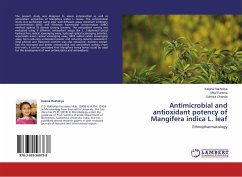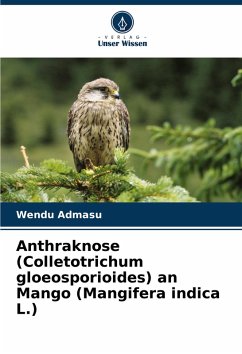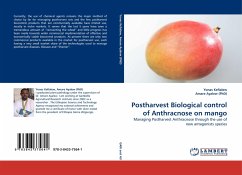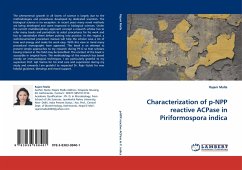
Antimicrobial and antioxidant potency of Mangifera indica L. stem
Ethnopharmacology
Versandkostenfrei!
Versandfertig in 6-10 Tagen
27,99 €
inkl. MwSt.

PAYBACK Punkte
14 °P sammeln!
The present work was undertaken to examine the Mangifera indica L. (Anacardiaceae) stem extracts, as a source of natural antioxidants and antimicrobics for retarding free radicals as well as infectious diseases. The present work is designed to evaluate the bioactive properties of the crude extract of stem. The antimicrobial study was performed using agar well diffusion assay, minimum inhibitory concentrations (MIC) and minimum bactericidal concentration (MBC) method against 25 disease causing bacteria. The antioxidant activity was evaluated using 6 different antioxidant assays like 2,2-dipheny...
The present work was undertaken to examine the Mangifera indica L. (Anacardiaceae) stem extracts, as a source of natural antioxidants and antimicrobics for retarding free radicals as well as infectious diseases. The present work is designed to evaluate the bioactive properties of the crude extract of stem. The antimicrobial study was performed using agar well diffusion assay, minimum inhibitory concentrations (MIC) and minimum bactericidal concentration (MBC) method against 25 disease causing bacteria. The antioxidant activity was evaluated using 6 different antioxidant assays like 2,2-diphenyl-1-picryl hydrazyl free radical scavenging assay, hydroxyl radical scavenging activities, superoxide anion radical scavenging assay, ABTS radical cation scavenging assay, ferric reducing antioxidant power and reducing capacity assessment. Total phenol and flavonoid content was also measured. Different extract posess varied activity. In This study demonstrated that mango stem, can serve as potential biological sources of antioxidants and antimicrobics for use in the preparation of dietary supplements or nutraceutical, food ingredients, pharmaceutical and cosmetic products.












